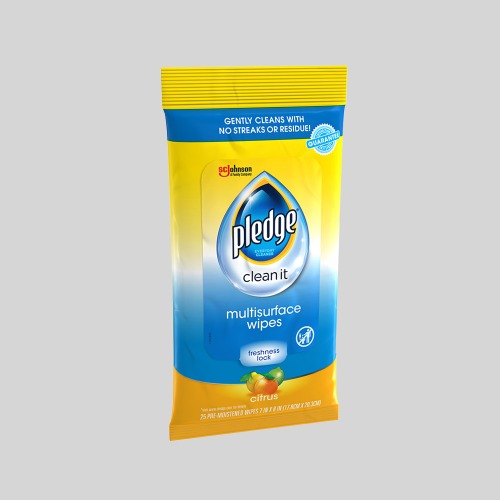Home / News / Industry News / The Classification of Multi-Surface Cleaner Wipes and The production steps of Multi-Surface Cleaner Wipes
Multi-surface cleaner wipes are typically categorized based on their primary function and the surfaces they are intended to clean. Here are some common categories of multi-surface cleaner wipes:
All-Purpose Wipes: These wipes are designed to clean a variety of surfaces, including countertops, glass, appliances, tiles, and more. They are formulated to remove dirt, grime, and common household stains from different surfaces.
Disinfecting Wipes: These wipes are specifically formulated to kill germs, bacteria, and viruses on various surfaces. They often contain disinfectant agents such as alcohol or quaternary ammonium compounds (quats). Disinfecting wipes are commonly used in kitchens, bathrooms, and other high-touch areas to maintain cleanliness and prevent the spread of illnesses.
Glass and Window Wipes: These wipes are specially designed to clean glass surfaces, such as windows, mirrors, and glass tabletops. They typically have a streak-free formula to achieve a clear, shiny finish without leaving residue or streaks behind.
Stainless Steel Wipes: These wipes are intended for cleaning and polishing stainless steel surfaces, including appliances, sinks, and fixtures. They often contain specialized ingredients that help remove fingerprints, smudges, and grease while leaving a shiny, protective finish.
Wood Surface Wipes: These wipes are specifically formulated to clean and nourish wood surfaces, such as furniture, cabinets, and floors. They typically contain ingredients like oils or polishes that help enhance the natural beauty of the wood while providing a protective layer.
Leather Wipes: Leather wipes are designed to clean and condition leather surfaces, such as furniture, car interiors, and accessories. They often contain moisturizing agents to prevent leather from drying out and cracking.
Antibacterial Wipes: These wipes are similar to disinfecting wipes but focus on targeting bacteria rather than viruses. They are commonly used in areas where bacterial contamination is a concern, such as kitchens, bathrooms, and healthcare facilities.
Specialty Surface Wipes: Some brands offer wipes specifically designed for certain surfaces, such as electronics, granite, marble, or specific types of flooring. These wipes are formulated to clean and protect those surfaces without causing damage or leaving residue.
Meanwhile,Here is a general outline of the production steps involved:
Formulation: The first step is to develop the formulation for the multi-surface cleaner wipes. This involves determining the appropriate ingredients and concentrations to achieve the desired cleaning properties. The formulation may include water, cleaning agents, disinfectants, fragrances, and other additives.
Substrate Preparation: The substrate refers to the material used to make the wipes. It is typically a nonwoven fabric that provides the structure and absorbency for the wipes. The substrate is prepared by cutting it into the desired size and shape.
Liquid Formulation Impregnation: The next step is to impregnate the nonwoven substrate with the liquid formulation. This is typically done in a controlled environment where the substrate is passed through a series of rollers or dipped into a tank containing the liquid. The liquid is absorbed by the substrate, ensuring that each wipe is saturated evenly.
Folding and Stacking: After the substrate is impregnated with the liquid formulation, the wipes are folded and stacked to create a convenient and compact product. This step may involve automated folding machines or manual folding processes depending on the scale of production.
Packaging: Once the wipes are folded and stacked, they are packaged into suitable containers or packaging materials. Common packaging options include plastic canisters, resealable pouches, or individual sachets. The packaging helps to preserve the moisture and prevent the wipes from drying out.
Sealing and Labeling: The packaging is sealed to maintain the freshness and prevent leakage or contamination. Labels are applied to the packaging, providing important information such as product name, instructions for use, ingredients, and safety warnings.
Quality Control: Throughout the production process, quality control measures are implemented to ensure that the wipes meet the required standards. This may include testing the wipes for absorbency, disinfecting efficacy, fragrance level, and overall quality.
Storage and Distribution: Once the multi-surface cleaner wipes are produced and pass quality control checks, they are stored in appropriate conditions to maintain their effectiveness. They are then distributed to retail stores or other distribution channels for consumers to purchase.



 English
English Español
Español
















